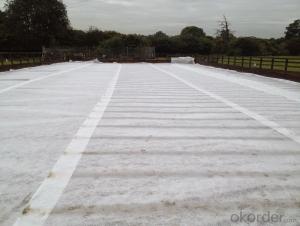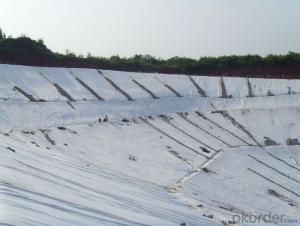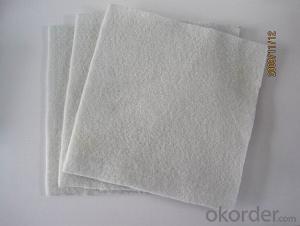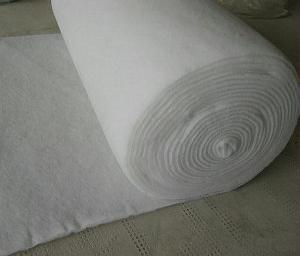Filament Spunbond Nonwoven Geotextile Products with Highest Quality
- Loading Port:
- China main port
- Payment Terms:
- TT OR LC
- Min Order Qty:
- 1000 m²
- Supply Capability:
- 10000000 m²/month
OKorder Service Pledge
OKorder Financial Service
You Might Also Like
Non-Woven Geotextile Functions
Filtration: Civil non-woven geotextiles filter soil particles while allowing excellent water permittivity for structures requiring drainage.
Erosion Control: They can provide erosion control structures with stabilization and filtration.
Reinforcement / Stabilization: Civil non-woven geotextiles filter soil particles while allowing excellent water permittivity for structures requiring drainage.
Geotextiles are permeable fabrics which when used in association with soil, have the ability to separate, filter, reinforce, protect or drain.
Geotextile uses
Protection: Geotextile when used as a protection layer acts as a cushioning barrier between the geosynthetic lining system and other layers of the dam or landfill cell. Generally the larger mass rolls of geotextile provide the best cushioning protection. As a protection barrier it helps prevent puncturing and leaks from external forces coming into contact with the liner.
Our Service
1.On a regular basis or as per your request,we entrust national testing agencies to conduct quality inspections
2. Strictly in accordance with the ISO9001-2008 international quality system standard,we monitor and manage the whole process throughout production,quality testing,and measurement to ensure product quality
3. For quality-related construction delay or substandard construction(except for damage or losses due to customer’s responsibility or irresistible natural disasters),we have refunding,replacement,and repair services.We will respond to customers’ feedbacks on quality issues within 24 hours.
4.In order to provide customers with comprehensive technical support,we will provide technical and other related information upon request in a timely manner.
5.In required,we will appoint specialized technicians to the construction site to give technical trainings to construction people,and offer technical guidance throughout the whole construction process.
6.For damage due to shipment and delivery,after we receive the complaint,we will check the issure through provided pictures and videos.If our responsibility is confirmed,we wil offer free replacement.
7.When the construction is completed,as your request,our technical staff may participate in the final acceptance.
FAQ:
Q: What kind of payments does jenor support?
A: T/T, L/C, Cash are accepted.
Q: Do you charge for the samples?
A: Accordeing to our company policy, the samples are free, we only charge the freight fee. And we will return the freight fee during the next order.
Q: Can you produce according to customers' design?
A: Sure, we are professional manufacturer, OEM and ODM are both welcome.
Q: Do you have other products?
A: Yes, please check the pictures:
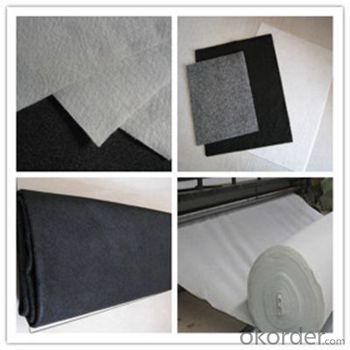
- Q:Why lay the geotextile cloth after the gravel cushion
- To prevent the upper and lower gravel, soil and concrete mixed between.
- Q:Can geotextiles be used in underground storage tank applications?
- Yes, geotextiles can be used in underground storage tank applications. Geotextiles are often employed as a protective barrier or liner to prevent soil erosion, provide filtration, and enhance drainage in various construction projects, including underground storage tanks. They can help in maintaining the structural integrity of the tank by preventing soil migration and reducing the risk of contamination.
- Q:White geotextile surface from the particles?
- First of all, to see your problem after I went to the workshop to see the next, geotextile surface is generally not from the particles. Later, after I carefully looked and found that the geotextile surface occasionally there will be a little white dot-like material, about 0.2-0.5mm in diameter, a square meter of geotextile above will not have more than five such particles, which may With the geotextile fiber, if the particles are not a lot of words will not affect the quality of geotextile products. Suggest that you do not have to worry about it.
- Q:What are the considerations for geotextile selection in railroad projects?
- There are several key considerations for geotextile selection in railroad projects. Firstly, the geotextile must have sufficient strength and durability to withstand the heavy loads and constant vibrations associated with train traffic. Additionally, it should have good filtration properties to prevent the migration of fine particles into the subgrade, which could lead to instability and settlement issues. The geotextile should also be resistant to degradation from environmental factors such as UV exposure and chemical exposure from ballast materials. Finally, the geotextile should be easy to install and maintain, ensuring a cost-effective and efficient solution for the railroad project.
- Q:What are the different functions of geotextiles in geoenvironmental engineering?
- Geotextiles serve various functions in geoenvironmental engineering, including erosion control, soil stabilization, drainage, filtration, and reinforcement. These materials prevent soil erosion by acting as a barrier against water flow and wind forces. They also stabilize soil by improving its mechanical properties, preventing soil movement and settlement. Geotextiles facilitate drainage by allowing water to pass through while retaining soil particles. They serve as a filtration layer, separating different soil layers and preventing the migration of fine particles. Additionally, geotextiles are used for reinforcement purposes, enhancing the strength and load-bearing capacity of soil structures.
- Q:What are the different installation methods for geotextiles?
- There are several installation methods for geotextiles, including direct placement, trenching, and mechanical installation. In direct placement, the geotextile is simply laid over the desired area and secured in place with stakes or sandbags. Trenching involves digging a trench and placing the geotextile in the trench before backfilling. Mechanical installation utilizes specialized equipment, such as a geotextile roller or a geotextile gun, to install the geotextile quickly and efficiently. The choice of installation method depends on the specific project requirements and site conditions.
- Q:Can geotextiles be used in mining applications?
- Yes, geotextiles can be used in mining applications. They are commonly used in mining operations for various purposes such as erosion control, slope stabilization, drainage, and filtration. Geotextiles help in preventing soil erosion, managing water flow, and enhancing the overall stability of mining sites. They are also used for lining tailings ponds and controlling sedimentation. Overall, geotextiles play a crucial role in improving the efficiency and environmental sustainability of mining operations.
- Q:Detailing the geotextile standard which, how to apply their own
- GB GB I specialize in the production of geotechnical materials
- Q:Can geotextiles be used in agricultural waste management systems?
- Yes, geotextiles can be used in agricultural waste management systems. Geotextiles are commonly used to control erosion, improve drainage, and provide filtration in various applications. In agricultural waste management, they can be utilized to line storage ponds, control the flow of water, and separate different layers of waste materials. Additionally, geotextiles can help in preventing nutrient leaching and protecting the surrounding environment from contamination.
- Q:How are geotextiles tested for permeability?
- Geotextiles are tested for permeability through various methods, such as the constant head test, falling head test, and the gradient ratio test. These tests involve measuring the flow of water through the geotextile under controlled conditions to determine its permeability properties.
1. Manufacturer Overview |
|
|---|---|
| Location | |
| Year Established | |
| Annual Output Value | |
| Main Markets | |
| Company Certifications | |
2. Manufacturer Certificates |
|
|---|---|
| a) Certification Name | |
| Range | |
| Reference | |
| Validity Period | |
3. Manufacturer Capability |
|
|---|---|
| a)Trade Capacity | |
| Nearest Port | |
| Export Percentage | |
| No.of Employees in Trade Department | |
| Language Spoken: | |
| b)Factory Information | |
| Factory Size: | |
| No. of Production Lines | |
| Contract Manufacturing | |
| Product Price Range | |
Send your message to us
Filament Spunbond Nonwoven Geotextile Products with Highest Quality
- Loading Port:
- China main port
- Payment Terms:
- TT OR LC
- Min Order Qty:
- 1000 m²
- Supply Capability:
- 10000000 m²/month
OKorder Service Pledge
OKorder Financial Service
Similar products
New products
Hot products
Related keywords
